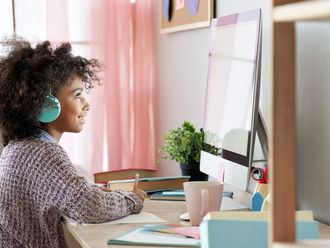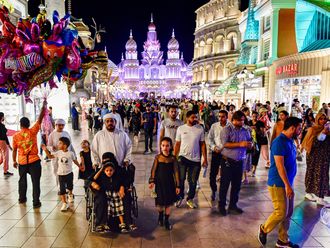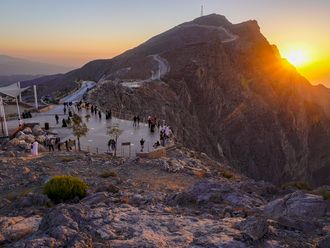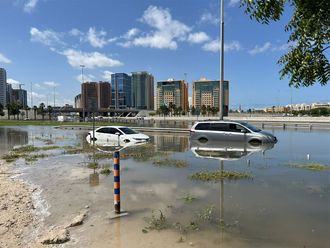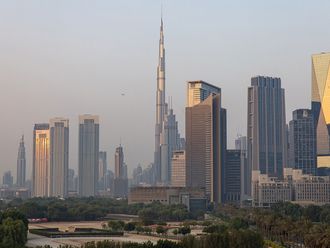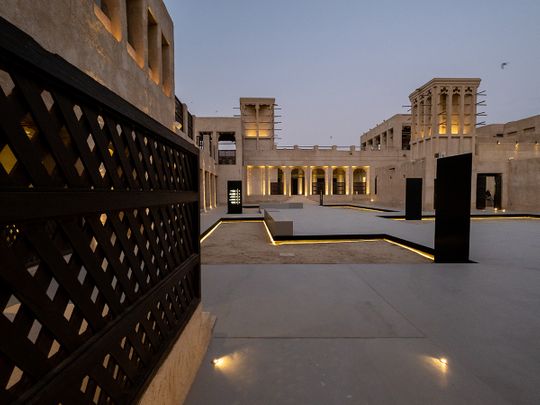
Dubai: “We want the world to know Dubai’s story and its history.” These were the words of His Highness Sheikh Mohammed bin Rashid Al Maktoum, Vice President and Prime Minister of the UAE and Ruler of Dubai, when he inaugurated the recently renovated Al Shindagha Museum on Monday, March 7.
The museum, which has artefacts and installations showcasing the city’s rich past, is located in the Dubai Creek area. Under the directions of Sheikh Mohammed, the Al Shindagha area, spanning over 310,000 square metres, will be transformed into an open-air museum, narrating the story of Dubai.
Here is all you need to know about the museum’s history and how you can plan your next trip there.
What is the Al Shindagha Museum?
The museum is the largest heritage museum in the UAE, featuring 22 pavilions that include 80 historic houses showcasing the development of Dubai and the UAE.
The museum educates visitors on Dubai’s traditional lifestyle from the 19th century up to the 1970s, before the city became the modern metropolis it is today.
Pavilions in Al Shindagha Museum
Each pavilion in the museum has a theme which ranges from culture, food, lifestyle to society.
1. Visitor’s centre:
This is the starting point of the museum and is located at the entrance. Here visitors will receive an introduction to the museum, and details on any new events, workshops, and programmes, which include guided tours.
You can also buy tickets to the museum from the reception here if you haven’t booked them online.
2. Governance and society
In this pavilion, you will find four sections:
1. Al Maktoum Residence - This section archives the experience of the late Sheikh Rashid bin Saeed Al Maktoum and his role in the development of Dubai, and the legacy of the Dubai ruling family’s legacy.
2. Dubai Creek - Birth of City – This section will show visitors glimpses of the famous ‘khor’ – a traditional regional word for creek or waterway. It will show visitors who this was the starting point for the city’s first bank, the first police house, the first produce market and more.
3. People of Faith – This section will help visitors understand how Islam has empowered Emiratis to hold on to their heritage and culture.
4. Emerging City – This section explores specific elements of the growth of the city, focusing on Dubai’s famous megastructures, as well as the enduring spirit of the neighbourhood of Shindagha.
2. Creativity and Wellbeing
Each section of this pavilion explores ancient Emirati clothing, crafts, traditional jewellery, perfumery, and medicine. The sections include:
1. Traditional Craft House
2. Beauty and Adornment
3. Traditional Jewellery
4. Perfume House
4. Living off the Sea and land
Did you know that the maritime history of Dubai dates back to over 7,000 years? The sea has played a pivotal role in the growth story of Dubai, which is explored in this section of the museum:
1. Culture of the Sea
2. Life on Land
3. Traditional Food
5. Children’s Pavilion
This pavilion includes the ‘Children’s House’ – this is a special section in the museum for young visitors to learn about Emirati heritage through an interactive playroom and enjoy playing some traditional Emirati games.
Tickets cost
• For adults: Dh50
• For students between the ages of five and 24: Dh20
• For groups of five adults or more: Dh40 per person
Al Shindagha Museum is free for children under the age five, People of Determination, and senior Emiratis.
How to book tickets for Al Shindagha Museum
You can buy the tickets at the museum’s reception or book the tickets in advance online by following these steps:
1. Visit the ticket booking platform from Dubai Culture: https://museumticketing.dubaiculture.gov.ae/ and select ‘Al Shidagha Museum’ from the menu on the top of the screen.
2. Select the date.
5. Chose the number of tickets.
6. Click on the ‘Continue’ button.
7. Next, you will have the option to create an online account with Dubai Culture or continue as a guest user on the site.
8. Enter your full name, and contact information – mobile number and email address.
9. Next, review the ticket booking and click on the ‘Proceed to Payment’ button.
10. Pay for the tickets with your credit or debit card.
Once the payment is confirmed, you will then get a digital version of the ticket on the website and receive them on your registered email address.
Timings:
The museum is open daily from 10am to 8pm. The last entry is at 7pm.

